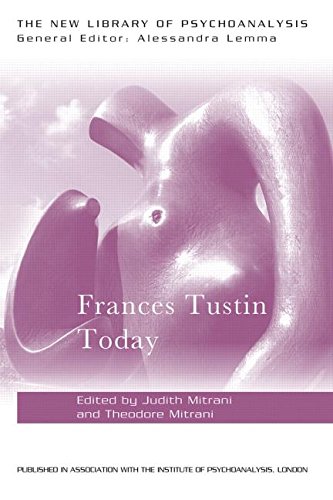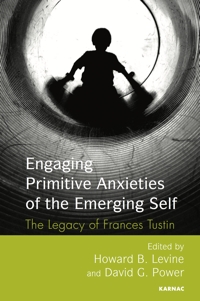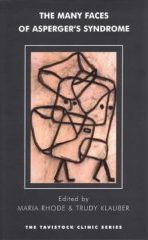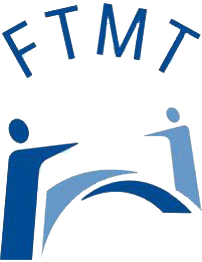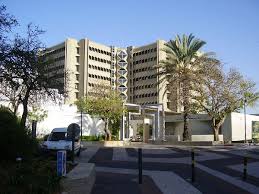Frances Tustin saw autism as a ‘psycho-biological’ condition. She strove to understand the experience of the children she treated, to share her understanding with them and to alleviate their sense of isolation. Her remarkable therapeutic power – many of her autistic patients made impressive recoveries – rested on her efforts to feel her way into the child’s world instead of imposing an alternative schema. Because she listened to what her patients told her, she was able to add important new insights to the Kleinian school of psychoanalysis in which she had been trained. These insights have had important applications to an in-depth understanding of both children and adults who are not on the autistic spectrum.
Tustin came to feel that autism was a self-protective reaction that shielded the child from experiences that could otherwise have been overwhelming. She described the use for this purpose of what she called autistic objects and autistic shapes. Autistic objects are typically hard, like a toy car that the child may clutch in his hand: the hard sensations they engender allow the child to feel strong. Autistic shapes, on the other hand, are soft sensations the child can provide for himself, with his breath and saliva for example, and can be used for purposes of self-soothing. Tustin stressed the vital need, from the child’s point of view, for these means of self-regulation, but also the fact that they were self-engendered and therefore took him away from human relationships.
Tustin’s four books and many papers provide vivid clinical accounts of the children she treated or whose treatment she supervised. When her first patient with autism, John, began to talk, he told her about the ‘black hole with a nasty prick’ that he felt he had in his mouth when he realised that he was physically separate from his caregivers: recognising the importance of this black hole of non-existence is one of Tustin’s central contributions, with important implications for such conditions as severe depression. She described vividly the existential terrors faced by many of the children she saw, including the fear of falling forever, of spilling out, of losing parts of the body, of burning or freezing. She took very seriously their need for self-protection, and warned against attempting to strip this away before the child had come to feel understood and therefore safe.
In her view, psychoanalytic psychotherapy provided a setting within which the therapist could learn to understand the autistic child’s experience through painstaking observation and by carefully monitoring her own feeling response. Tustin’s imaginative insights are vividly conveyed in her writings, which are both poetic and precise and which speak to parents as well as professionals. She had great sympathy for the courage of the parents whose children she treated, who she said inspired compassion and therapeutic ambition, and she firmly opposed the tendency of some early writers to hold them responsible for their children’s condition.
Tustin’s work inspired great interest world-wide, and many students continue to build on it. This website provides links to some of her main contributions.
Frances Tustin: Bibliography
Tustin, F. (1951). A Group of Juniors: A Study of Latency Children’s Play. London: Heinemann Educational Books.
Tustin, F (1958). Anorexia nervosa in an adolescent girl. British Journal of Medical Psychology 31: 184 – 200.
Tustin, F. (1963). Two drawings occurring in the analysis of a latency child. Journal of Child Psychotherapy 1: 41 – 6.
Tustin, F. (1966). ‘A significant element in the development of autism’. Journal of Child Psychology and Psychiatry 7: 53 – 67.
Tustin, F. (1967). Individual therapy in the clinic. 23rd Child Guidance Inter-Clinic Conference (NAMH, London).
Tustin, F. (1969). Autistic processes.Journal of Child Psychotherapy. 2: 23 – 39.
Tustin, F. (1972). Autism and Childhood Psychosis., London: Hogarth; New York: Science Hs.
Tustin, F. (1980). Autistic objects., Int. Rev. Psychoanal., 7:27-40.
Tustin, F. (1981). Autistic States in Children., London: Routledge and Kegan Paul.
Tustin, F. (1984). Autistic shapes. Int. Rev. Psychoanal., 11:279-290.
Tustin, F. (1973). Therapeutic communication between psychotherapist and psychotic child. Journal of Child Psychotherapy 2: 440 – 50.
Tustin, F. (1978). Psychotic elements in the neurotic disorders of children. Journal of Child Psychotherapy 4: 5 -18.
Tustin, F. (1980). Psychological birth and psychological catastrophe. In Grotstein, J. S. (Ed.) Do I Dare Disturb the Universe? Beverly Hills, CA: Caesura Press, 1981. Also in Autistic States in Children, London: Routledge, 1981.
Tustin, F. (1980). ‘Autistic objects.’ International Review of Psycho-Analysis, 7: 27 – 39.
Tustin, F. (1981). A modern Pilgrim’s Progress: reminiscences of analysis with Dr. Bion. Journal of Child Psychotherapy 7: 175 – 9.
Tustin, F. (1981). “I”-ness: the emergence of the self. Winnicott Studies 1.
Tustin, F. (1983). ‘Thoughts on autism with special reference to a paper by Melanie Klein.’ Journal of Child Psychotherapy 9: 119 – 31.
Tustin, F. (1984). Autistic shapes. International Review of Psycho-Analysis 11: 279 – 90.
Tustin, F. (1984). Autism – aetiology and therapy. Proceedings of the Paris Conference on Autism.
Tustin, F. (1984). Significant understandings in attempts to ameliorate autistic states. Proceedings of the Monaco Conference on Autism.
Tustin, F. (1984). The growth of understanding. Journal of Child Psychotherapy 10: 137 – 49.
Tustin, F.(1984) Autistic shapes and adult pathology.’ Topique. (France).
Tustin, F. (1985).The threat of dissolution’ Dédale (France).
Tustin, F. (1986). Autistic Barriers in Neurotic Patients, London: Karnac Books. Second revised edition, 1994.
Tustin, F. (1987). The rhythm of safety. Winnicott Studies, 2.
Tustin, F. (1988). The black hole – a significant element in autism. Free Association,s 11.
Tustin, F. (1988).Psychotherapy with children who cannot play. International Review of Psycho-Analysis 15.
Tustin, F. (1988). “To be or not to be” – a study of autism. Winnicott Studies, 3.
Tustin, F. (1988). What autism is and what autism is not. In Szur, R. & Miller, S. (eds) Extending Horizons. London: Karnac Books. 1991.
Tustin, F. (1991). Revised understandings of psychogenic autism. International Journal of Psycho-Analysis 72: 585 – 92.
Tustin, F. (1993). On psychogenic autism. Psychoanalytic Inquiry , 13: 34 – 41.
Tustin, F. (1994).The perpetuation of an error. Journal of Child Psychotherapy, 20: 3 – 23.
Tustin, F.(1994). Autistic children who are assessed as not brain-damaged. Journal of Child Psychotherapy 20 : 103 – 31.
Tustin, F. (1988). Psychotherapy with children who cannot play., Int. Rev. Psychoanal., 15:93-106.
Tustin, F. (1990). The Protective Shell in Children and Adults, London: Karnac Books.
Tustin, F. (1991). Revised understandings of psychogenic autism., Int. J. Psychoanal., 72:585-592.
Tustin, F. (1993). On psychogenic autism. Psychoanal. Inquiry, 13:34-41.


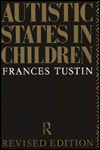


Bibliography: Trust Members and Friends
Alvarez, A. (1992). Live Company; Psychoanalytic Therapy With Autistic, Abused and Borderline Psychotic Children . London: Routledge.
Alvarez, A. (1999). Autism and Personality; Findings from the Tavistock Autism Workshop. London: Routledge.
Grotstein, J. S. (1981) Do I Dare Disturb the Universe? London: Karnac Books.
Lechevalier, B. & Lechevalier, B. (1998). Le Corps et leSens . Paris: Delachaux & Niestle.chevalier, B. & Lechevalier, B.
Mitrani, T., Mitrani, J. (1997) Encounters with Autistic States: A Memorial Tribute to Frances Tustin. Jason Aronson.
Mitrani, J. (1996). A Framework For The Imaginary: Clinical Explorations in Primitive States of Being. New Jersey: Jason Aronson Publishers, Inc.
Mitrani, J. (2001). Ordinary People and Extra-Ordinary Protections: A Post Kleinian Approach to the Treatment of Primitive Mental States. London: Routledge.
Pozzi M. E. (2003). Psychic Hooks and Bolts: Psychoanalytic Work With Children Under Five and Their Families . London: Karnac Books.
Rhode, M. & Houzel, D. (2005) Invisible Boundaries: Psychosis And Autism in Children And Adolescents. European Federation for Psychoanalytic Psychotherapy.
Rhode, M. & Klauber,T. (2004) The Many Faces of Asperger’s Syndrome. London: Tavistock Clinic Series.
Rustin, M. (2004). Psychotic States in Children. London: Tavistock Clinic Series.
Rustin, M. & Quagliata, E. (2003). Assessment in Child Psychotherapy. London: Tavistock Clinic Series.
Spensley, S. (1995). Frances Tustin: The Borderlands of Autism and Psychosis (Makers of Modern Psychothera). London/New York: Routledge.
Margaret Rustin, Maria Rhode, Helene Dubinsky, Alex Dubinsky (1997). Psychotic States in Children. London: Karnac Books.
Meg Harris Williams and Maria Rhodes (2012). Enabling and Inspiring: A tribute to Martha Harris. London: Karnac Books.
Dana Amir (2014). Cleft Tongue: The Language of Psychic Structures. . London: Karnac Books.
Ed. Kate Barrows (2008). Autism in Childhood and Autistic Features in Adults: A Psychoanalytic Perspective. London: Karnac Books.
Peter Blake. (2011). Child and Adolescent Psychotherapy. London: Karnac Books.
Judith L. Mitrani (2014). Psychoanalytic Technique and Theory: Taking the Transference . London: Karnac Books.
Judith and Theodore Mitrani (2015). Frances Tustin Today. London: Routledge.
Bernd Nissen (2012). Wendepunnkte: Zur Theorie und Klinik psychoanalytischer Veranderungssprozesse . Berlin: Verlag.
Bianca Lechevalier (2016). Le Souffle de L’existence: le travail d’une psychanalyste avec l’enfant et l’adolescent . Paris: Editions in Press.
